 W
WAcallam na Senórach, is an important prosimetric Middle Irish narrative dating to c.1200. It is the most important text of the Finn Cycle and at about 8,000 lines is the longest surviving work of medieval Irish literature. It contains many Finn Cycle narratives framed by a story in which the fianna warriors Oisín and Caílte mac Rónáin have survived long enough to relate the tales to Saint Patrick. The work has been seen as a defence of the Irish literary establishment when it came under the scrutiny of Church reformers during the 12th to 13th centuries.
 W
WAucassin et Nicolette is an anonymous medieval French fictional story. It is the unique example of a chantefable, literally, a "sung story", a combination of prose and verse.
 W
W"Bisclavret" is one of the twelve Lais of Marie de France written in the 12th century. Originally written in French, it tells the story of a werewolf who is trapped in lupine form by the treachery of his wife. The tale was popular and was reworked as The Lay of Melion, and is probably referenced in Sir Thomas Malory's Le Morte d'Arthur with the tale of Sir Marrok, who has a similar story.
 W
WThe Chronica Boemorum is the first Latin chronicle in which the history of the Czech lands has been consistently and relatively fully described. It was written in 1119-1125 by Cosmas of Prague.
 W
WThe Dendermonde Codex or sometimes called Villarenser Kodex or codex 9 of Dendermonde Abbey, is a valuable manuscript containing the Symphonia harmoniae caelestium revelationum of Hildegard of Bingen.
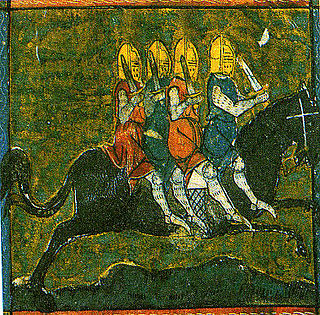 W
WThe Four Sons of Aymon, sometimes also referred to as Renaud de Montauban is a medieval tale spun around the four sons of Duke Aymon: the knight Renaud de Montauban, his brothers Guichard, Allard and Richardet, their magical horse Bayard, their adventures and revolt against the emperor Charlemagne. The story had a European success and echoes of the story are still found today in certain folklore traditions.
 W
WThe Gospels of Henry the Lion were intended by Henry the Lion, Duke of Saxony, for the altar of the Virgin Mary in the church of St. Blaise's Abbey, Brunswick, better known as Brunswick Cathedral. The volume is considered a masterpiece of Romanesque book illumination of the 12th century.
 W
WKhosrow and Shirin is the title of a famous tragic romance by the Persian poet Nizami Ganjavi (1141–1209), who also wrote Layla and Majnun. It tells a highly elaborated fictional version of the story of the love of the Sasanian king Khosrow II for the Armenian princess Shirin, who becomes queen of Persia. The essential narrative is a love story of Persian origin which was already well known from the great epico-historical poem the Shahnameh and other Persian writers and popular tales, and other works have the same title.
 W
WKimiya-yi Sa'ādat was a book written by Abū Ḥāmid Muḥammad ibn Muḥammad al-Ghazālī, a Persian theologian, philosopher, and prolific Sunni Muslim author regarded as one of the greatest systematic thinkers of Islam. The Kimiya-yi Sa'ādat was written towards the end of his life shortly before 499 AH/1105 AD. During the time before it was written the Muslim world was considered to be in a state of political as well as intellectual unrest. Al-Ghazālī, noted that there were constant disputes about the role of philosophy and scholastic theology, and that Sufis became chastised for their neglect of the ritual obligations of Islam. Upon its release, the Kimiya-yi sa'ādat allowed al-Ghazali to considerably cut the tensions between the scholars and mystics. Kimiya-yi sa'ādat emphasized importance of observing the ritual requirements of Islam, the actions that would lead to salvation, and avoidance of sin. The factor that set the Kimiya-yi sa'ādat apart from other theological works at the time was its mystical emphasis on self-discipline and asceticism.
 W
WLīlāvatī is Indian mathematician Bhāskara II's treatise on mathematics, written in 1150. It is the first volume of his main work, the Siddhānta Shiromani, alongside the Bijaganita, the Grahaganita and the Golādhyāya.
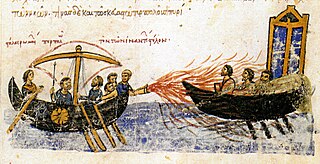 W
WThe Madrid Skylitzes is a richly illustrated illuminated manuscript of the Synopsis of Histories, by John Skylitzes, which covers the reigns of the Byzantine emperors from the death of Nicephorus I in 811 to the deposition of Michael VI in 1057. The manuscript was produced in Sicily in the 12th century, and is now at the Biblioteca Nacional de España in Madrid, with the shelfmark MS Graecus Vitr. 26–2. Other names for it include the Latin: Codex Græcus Matritensis Ioannis Skyllitzes, or Skyllitzes Matritensis.
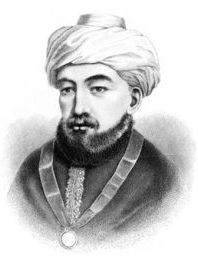 W
WThe Mishneh Torah, subtitled Sefer Yad ha-Hazaka, is a code of Jewish religious law (Halakha) authored by Maimonides. The Mishneh Torah was compiled between 1170 and 1180 CE, while Maimonides was living in Egypt, and is regarded as Maimonides' magnum opus. Accordingly, later sources simply refer to the work as "Maimon", "Maimonides", or "RaMBaM", although Maimonides composed other works.
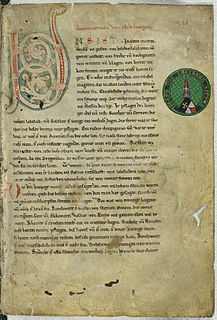 W
WThe Nibelungenlied, translated as The Song of the Nibelungs, is an epic poem written around 1200 in Middle High German. Its anonymous poet was likely from the region of Passau. The Nibelungenlied is based on an oral tradition that has some of its origin in historic events and individuals of the 5th and 6th centuries and that spread throughout almost all of Germanic-speaking Europe. Parallels to the German poem from Scandinavia are found especially in the heroic lays of the Poetic Edda and in the Völsunga saga.
 W
WThe Roman d'Alexandre, from the Old French Li romans d'Alixandre, is a 16,000-verse twelfth-century) Old French Alexander romance detailing various episodes in the life of Alexander the Great. It is considered by many scholars as the most important of the Medieval Alexander romances. Many of the manuscripts of the work are illustrated. The poem is generally divided into four branches. The final form of the poem is largely credited to Alexandre de Bernay who probably placed the branches in the order we find them, reworked the first branch into alexandrines, incorporated the text of Pierre de Saint-Cloud, and added verses to join each branch.
 W
WLe Roman d'Enéas is a romance of Medieval French literature, dating to ca. 1160. It is written in French octosyllabic couplets totaling a little over 10,000 lines. Its subject matter is the tale of Aeneas, based on Virgil's Aeneid. It is one of the three important Romans d'Antiquité of this period; the other two are the Roman de Thèbes (anonymous) and the Roman de Troie of Benoît de Sainte-Maure.
 W
WThe Ruiju myōgishō , alternatively misread as Ruijū myōgishō, is a Japanese dictionary from the late Heian Period. The title, sometimes abbreviated as Myōgishō, combines the ruiju from the Wamyō Ruijushō and the myōgi from the Tenrei Banshō Myōgi. Additional Buddhist titles, like Sanbō ruiju myōgishō (三宝類聚名義抄), use the word sanbō because the text was divided into butsu, hō, and sō sections.
 W
WThe Tale of Igor's Campaign is an anonymous epic poem written in the Old East Slavic language. The title is occasionally translated as The Tale of the Campaign of Igor, The Song of Igor's Campaign, The Lay of Igor's Campaign, The Lay of the Host of Igor, and The Lay of the Warfare Waged by Igor.
 W
WThe Textus Roffensis, fully titled the Textus de Ecclesia Roffensi per Ernulphum episcopum and sometimes also known as the Annals of Rochester, is a mediaeval manuscript that consists of two separate works written between 1122 and 1124. It is catalogued as "Rochester Cathedral Library, MS A.3.5" and is currently on display in a new exhibition at Rochester Cathedral, Rochester, Kent. It is thought that the main text of both manuscripts was written by a single scribe, although the English glosses to the two Latin entries were made by a second hand. The annotations might indicate that the manuscript was consulted in some post-Conquest trials. However, the glosses are very sparse and just clarify a few uncertain terms. For example, the entry on f. 67r merely explains that the triplex iudiciu(m) is called in English, ofraceth ordel.
 W
WMaqasid al Falasifa, or The Aims of the Philosophers was written by Al-Ghazali. Influenced by Avicenna's works, he wrote this book presenting the basic theories of Philosophy. In this book, he explained in detail about what philosophy is and described basic entities like judgement, concept, premise and logic. Al-Ghazali stated that one must be well versed in the ideas of the philosophers before setting out to refute their ideas. He also stated that he did not find other branches of philosophy including physics, logic, astronomy or mathematics problematic. After writing Maqasid al Falasifa, he wrote another book Tahāfut al-Falāsifa, criticizing the Avicennian school of early Islamic philosophy.
 W
WBidayat al Hidayah was written by Abū Ḥāmid Muḥammad ibn Muḥammad al-Ghazālī during his last days. It is a guidebook describing the principles of getting guidance through taqwa. The manual is concise and arranged in the form of a daily programme. The book contains three sections, which are on the obedience, refraining from disobedience, and the etiquette of companionship with the God and His creation. It serves as a preface to his major texts.
 W
WAl-Iqtisād fī al-iʿtiqad, or The Moderation in Belief is a major theological work by Abū Ḥāmid Muḥammad ibn Muḥammad al-Ghazali. George Hourani indicated that the Iqtisad and Mizan al-amal were completed before or during Ghazali's crisis of faith. It led him to abandon his notorious post at the Niẓamiyya school in Baghdad and enter the path of Tasawwuf. In it, he offers what scholars consider as the best defence of the Ash'arite school of Islamic theology. He also expressed strong reservations about a theology based on taqlid and marked by polemics. In this book, Ghazali makes an attempt to respond to the extreme literalists and the Muʿtazilites. It is the balance between reason and revelation that led to the title of book The Moderation in Belief.
 W
WTorikaebaya Monogatari , translated into English as The Changelings, is a Japanese tale from the late Heian period by an unknown author, or possibly more than one author. It is four volumes in length.
 W
WVästgötalagen or the Westrogothic law is the oldest Swedish text written in Latin script and the oldest of all Swedish provincial laws. It was compiled in the early 13th century, probably at least partly at the instigation of Eskil Magnusson and was the code of law used in the provinces of Västergötland and Dalsland and in Mo härad during the latter half of that century. The earliest complete text is dated 1281. Small fragments of an older text have been dated 1250.
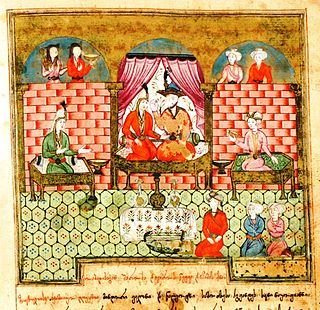 W
WVisramiani is a medieval Georgian version of the old Iranian love story Vīs and Rāmīn, traditionally taken to have been rendered in prose by Sargis of T'mogvi, a 12th/13th-century statesman and writer active during the reign of Queen Tamar.
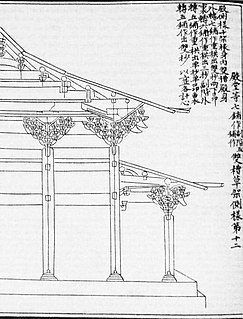 W
WThe Yingzao Fashi is a technical treatise on architecture and craftsmanship written by the Chinese author Li Jie, the Directorate of Buildings and Construction during the mid Song Dynasty of China. A promising architect, he revised many older treatises on architecture from 1097 to 1100. By 1100, he had completed his own architectural work, which he presented to Emperor Zhezong of Song. The emperor's successor, Emperor Huizong of Song, had the book published in 1103 in order to provide a unified set of architectural standards for builders, architects, and literate craftsmen as well as for the engineering agencies of the central government. With his book becoming a noted success, Li Jie was promoted by Huizong as the Director of Palace Buildings. Thereafter, Li became well known for his oversight in the construction of administrative offices, palace apartments, gates and gate-towers, the ancestral temple of the Song Dynasty, along with numerous Buddhist temples. In 1145, a second edition of Li's book was published by Wang Huan. Between 1222-1233, a third printing was published. This edition, published in Pingjiang, was later handcopied into the Yongle Encyclopedia and Siku Quanshu. In addition, a number of handcopied editions were made for private libraries. One of these handcopies of the Pingjiang edition was rediscovered in 1919 and printed as facsimile in 1920.